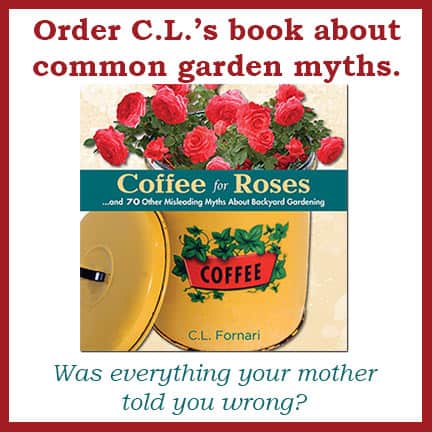It’s in the spring, when many plants are breaking dormancy and putting on new growth more rapidly than we can imagine possible, that we finally see the damage that winter has done to our Rhododendron shrubs. Brown edges, spots on the leaves, toasted stems, curled foliage and wholesale die-back…all of this can be seen in areas that had a cold winter.
Many wonder if their weekend project has to be the removal of these brown leaves or crispy stems, while others wonder if there is a disease or insect at work on their plants. “Do I need to spray my Rhodys?” one person asked me, while another wanted to know why one of his plants looked dead while another was green, full and getting geared up to flower.
Here’s the scoop on winter damaged Rhododendrons:
1. The spots that you see so prominently at this time of year are mostly leaf spot fungus that happened last summer or fall. It just shows up more after those spotted areas died out more throughly over the winter and because some Rhododendron leaves are still yellowish from the winter. Soon the new foliage will grow and you won’t notice this leaf spot as much. You don’t have to spray or apply a fungicide, but be sure that you aren’t getting the foliage wet too frequently this season with hand-watering or an automatic irrigation system that is going off more than once a week. Frequent splashing of foliage can promote leaf spot fungus.
2. Brown leaf edges or entire leaves that have turned crispy are winter damage, usually from a combination of the ground being frozen (the plant can’t absorb water that is being lost through the leaves), sunburn from direct sun or sunlight being reflected off snow, or wind burn. There is no reason to clip these damaged leaves off since the plant will shed them as soon as the new growth begins.
3. Brown branches or entire stems that are toasted may need to be pruned off but early spring is a bit too soon to make that decision. Once the new growth appears on the plant you’ll be able to see if those stems are still alive or not. Once you see new growth on the rest of the plant, cut off those stems that are brown and have no new foliage starting. If there are brown branches on one side of the plant only this is likely on the side that got hit by winds all winter, or the areas that were hit by sun reflecting off the snow.
4. Curled leaves, yellow foliage, or overall wilting might be a sign that the plant is not going to recover. Look at the base of the trunk/stem to see if the bark has been chewed or stripped from around the plant. Look for breakage or holes in the stems that might indicate a borer at work. When you dig the plant up look for brown, rotted roots (root rot = too wet) or dried roots (too dry) or sunken areas on the trunk or stems. Know that sometimes we never find out what killed a plant, so if you can’t figure it out don’t worry too much, but it might be advisable not to put the same type of plant back in that location.
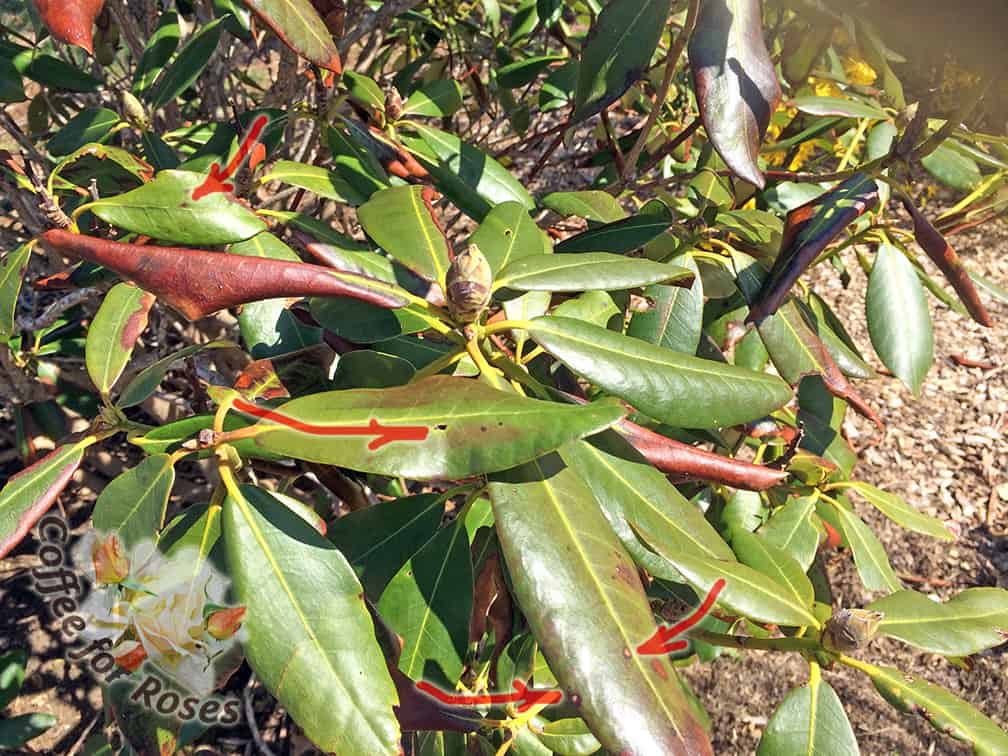
The arrows point to spots on the leaves caused by last year’s leaf spot fungus. Usually leaf spot is a cosmetic issue only.
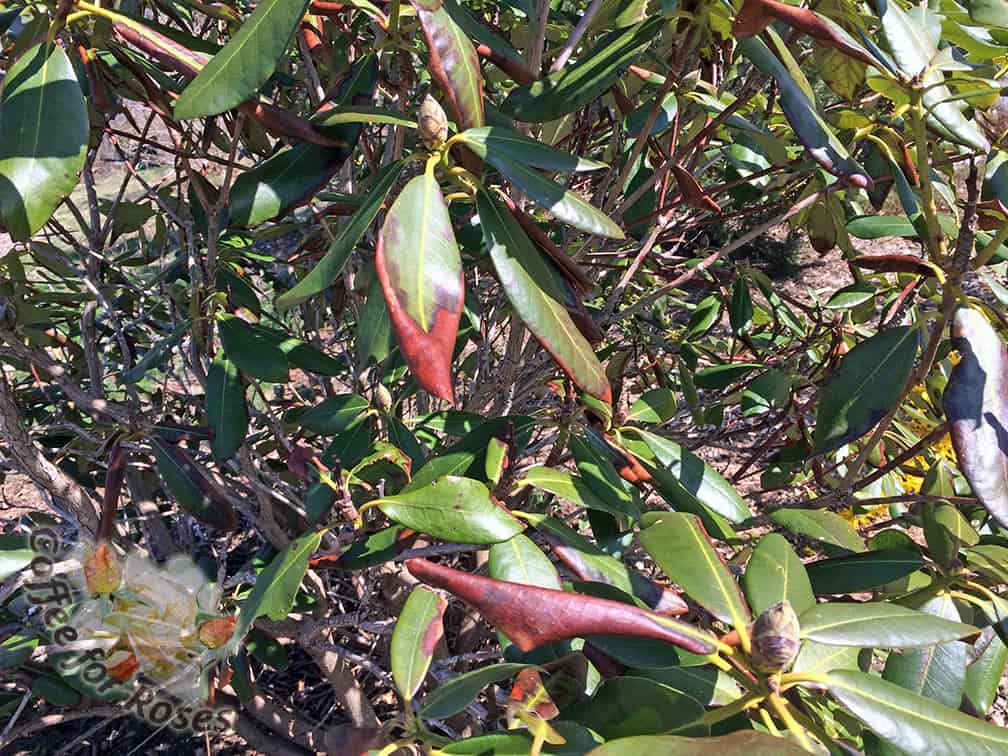
Random leaves that look burned are common after a cold winter. The plant will drop these as the new growth appears.
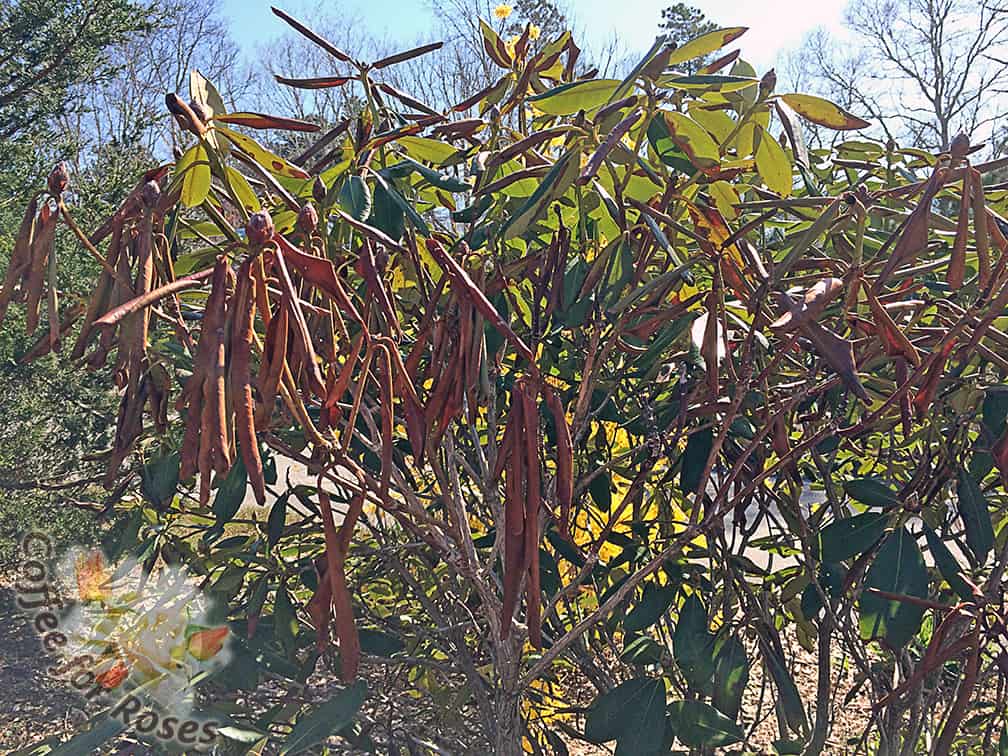
This plant has more serious damage. This is the side of the shrub that was repeatedly hit by cold winds. I’ll wait until the new growth appears on the healthier side of the plant to determine if these stems are totally toasted or not. Or, as Miracle Max said in The Princess Bride, if they are mostly dead or all dead. “There’s a big difference between mostly dead and all dead. Mostly dead is slightly alive.” I’ll find out by early June if these branches are mostly or all.
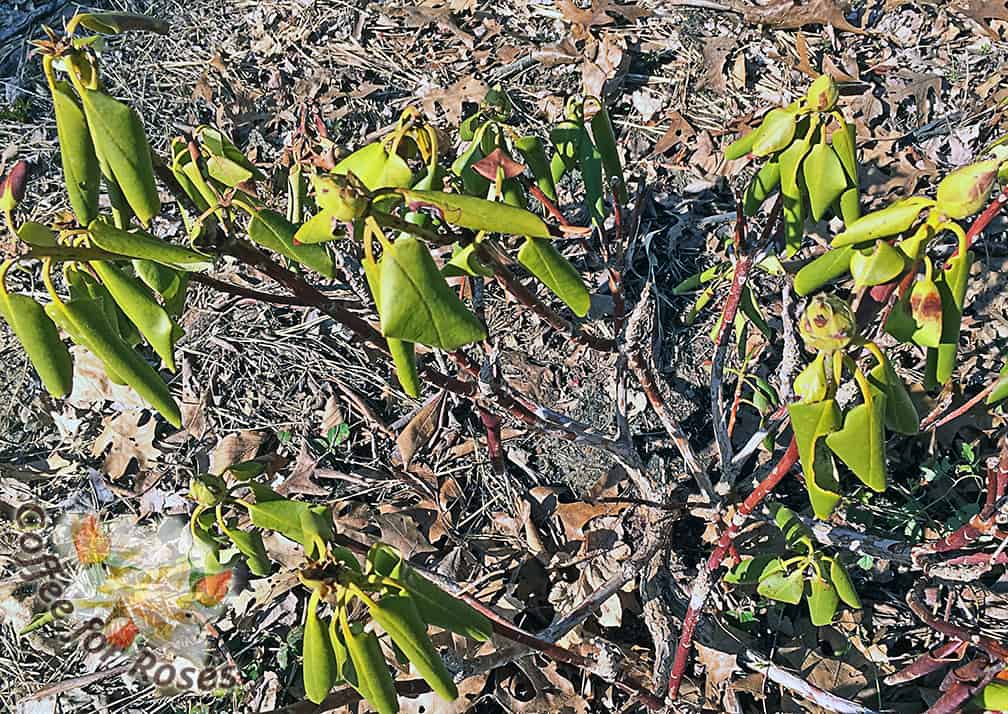
This plant is probably all dead. I can’t see a girdled or damaged stem. It isn’t any drier than the other Rhododendrons in the area and they aren’t curled. It was exposed to wind through the winter except for the two or more months when it was covered by snow. Was it something that killed it at root level? The cold, snow or wind? I have no idea, but it’s not getting any better as spring goes on.



